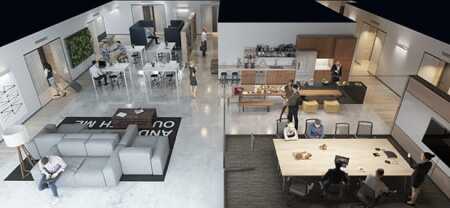Concepts like cohousing and similar models of development are poorly understood oddities or pigeonholed as student housing. But, speaking at the recent 2016 ULI Spring Meeting, moderator Howard Kozloff, a panelist from Agora Partners, encouraged audience members starting with that foundation to think about ideas like “student housing configuration with a different lease profile.”
In Washington, D.C., Jamison Weinbaum, from Ditto Residential, said his company was confronting the city’s famed shortage of housing by building luxury units that featured as many as five bedrooms.
“We saw a need for shared space and then we had a site where there was a cap on the number of units,” he said. “D.C. is struggling to provide affordable units, and this was a creative way to say, ‘You can still live in a new product by having a little less private space.’ ”
To some Americans, the idea of giving up any privacy is an anathema, but panelists found that there were just as many buyers frustrated by the isolation and lack of community inherent in many typical, single-family housing developments.
Scott Blew, from H.ME, said that both residential and hotel developments have for too long created sterile, isolating spaces that many consumers may not hate, but also do not like. His company has focused on creating hotel-like buildings (branded as C Suites) that offer affordable units designed to include an attractive central meeting place.
“Each floor has a community space, sort of a flex space surrounded by private beds,” he said. “So, instead of having your own couch, you get a really awesome public space.”
But developments do not have to focus on big dorm-style units to satisfy changing public preferences, according to Marja Preston, who lives in a house built by her company, Oranje LLC.
Her development is centered on public space, and most units have doubled in value over three years. That is a reflection, she said, of the fact that, for most buyers, a sense of “neighborhood” is the most desirable, and yet also elusive, attribute that housing can offer.
“We started asking people, ‘If you could design the perfect neighborhood, what would it look like?’ ” she said. “We ended up creating a community based around shared space, a safe community for people of all ages to live in.”
Colleen Carey from the Cornerstone Group echoed this sentiment. Her company is building a new apartment building in Minneapolis anchored by a large, interior public lobby.
“We’re creating spaces designed to be used by multiple people. What people are searching for is a sense of community,” she said.
Lance Robbins from Urban Smart Growth said that developing around a shared space is still wrongly viewed as a new, experimental form of building.
“We shared all kinds of things at [University of California at] Berkeley in the ’60s. Now it’s just permeating other things, like the tech economy,” he said. “Millennials and boomers have much more in common than people realize.”
Robbins referred to one project—the renovation of an abandoned toilet factory in Columbus, Ohio—that converted industrial space into artists’ lofts centered on a large communal space featuring a central gallery, performance stage, and bar. The project was so successful that his company is replicating the model at another site, in California.
Robbins said many developers viewed projects with communal aspects as too limiting, ignoring the popularly held perception that consumers demand privacy above all else. But because so much housing has focused on appealing to a focus group–generated, lowest-common-denominator resident profile, the U.S. housing market as a whole has itself become too limited.
“The problem with most developers is that they build for one person. This is about creating space around all these different personas,” Robbins said. “This is based around letting people do what they want to do. When you really figure out what people want and give them the chance to do that, the results are amazing . . . and it’s also profitable.”
Weinbaum said his company was hoping their D.C.-based dorm-style urban housing model could also be adapted for family housing, which is critically short in the nation’s capital.
“We’re working on a project that would be all-family housing. Instead of a club room, we want to have a play room,” he said. “We think that could be a whole other kind of space. We’re always trying to look at other markets.”





